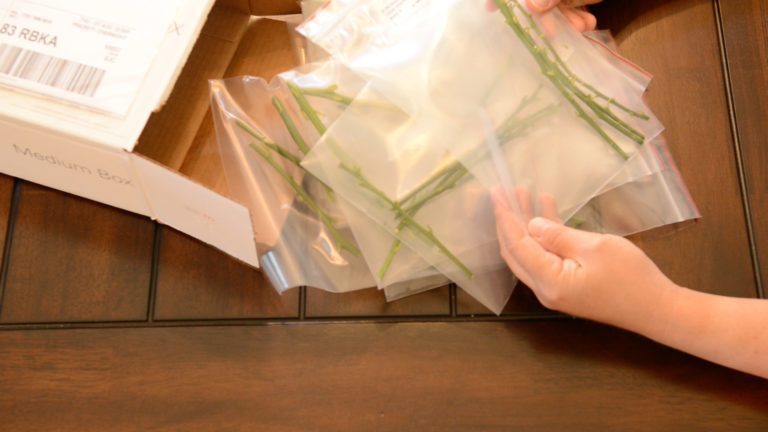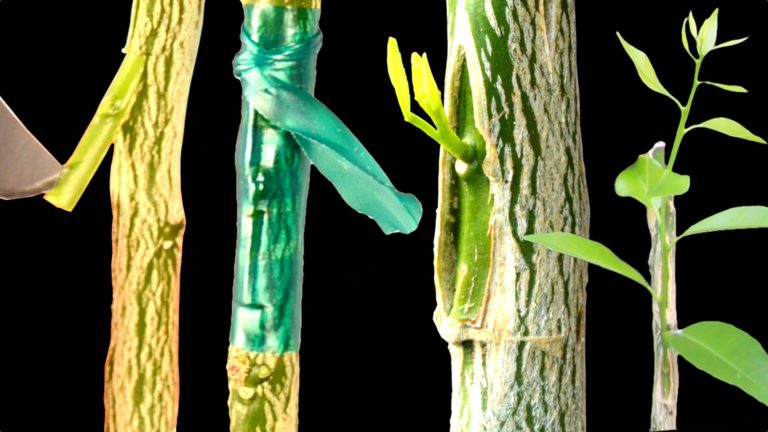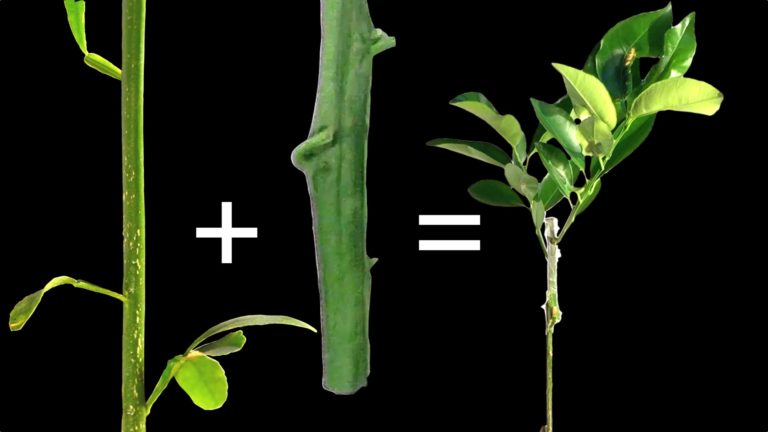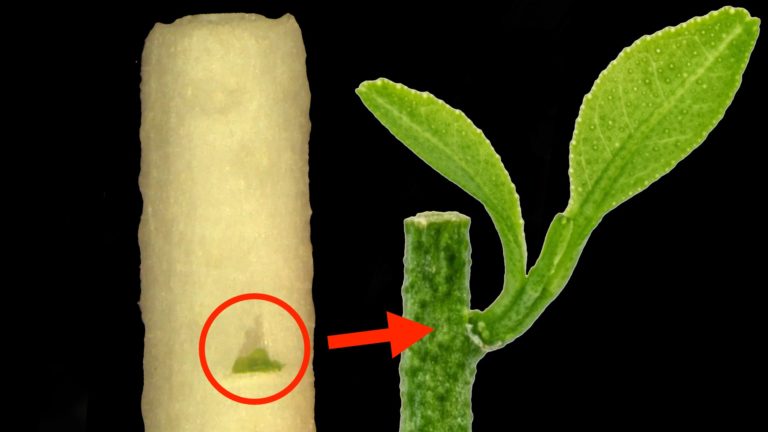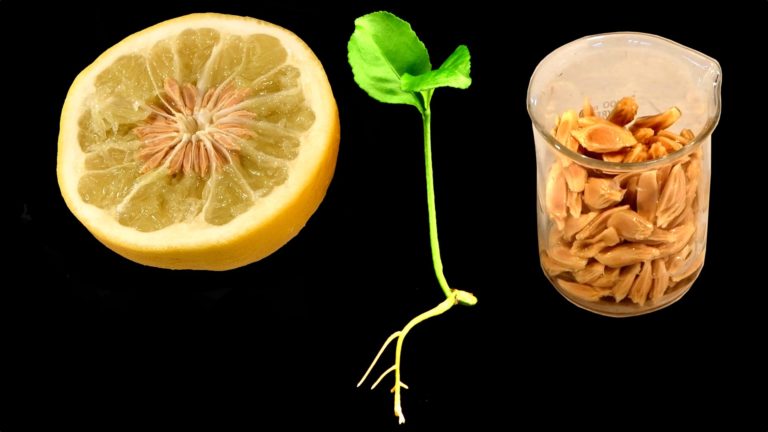Grafting Citrus Trees by Chip Budding in a California Nursery
This article shows a highly efficient bud grafting technique used for grafting citrus trees in citrus nurseries.
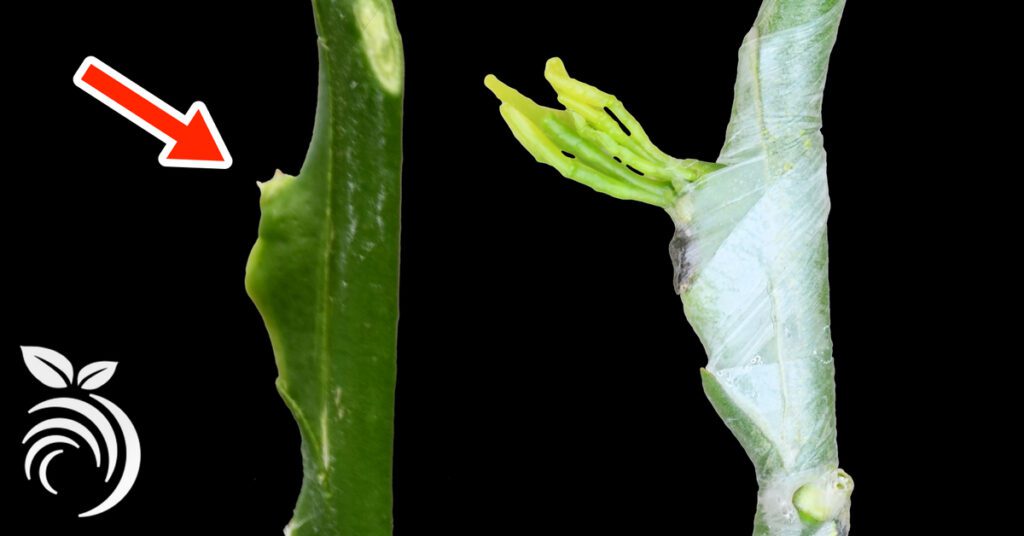
I saw chip budding of citrus performed at TreeSource Citrus Nursery in California’s central valley. Chip budding is a bud grafting technique used for grafting orange trees, grafting lemon trees, and for grafting citrus trees of all varieties. Chip budding to young citrus rootstocks makes it possible to propagate a large number of citrus trees in a small space.
Grafting Citrus Trees by Chip Budding in a California Nursery – YouTube Video
In addition to this article, I have made a YouTube video showing citrus propagation by chip budding.
Asian Citrus Psyllids Spread Huanglongbing, a Deadly Citrus Disease
In California our citrus trees are under severe threat from a deadly disease called huanglongbing. This disease is spread by Asian citrus psyllids and by people who graft with infected citrus budwood.
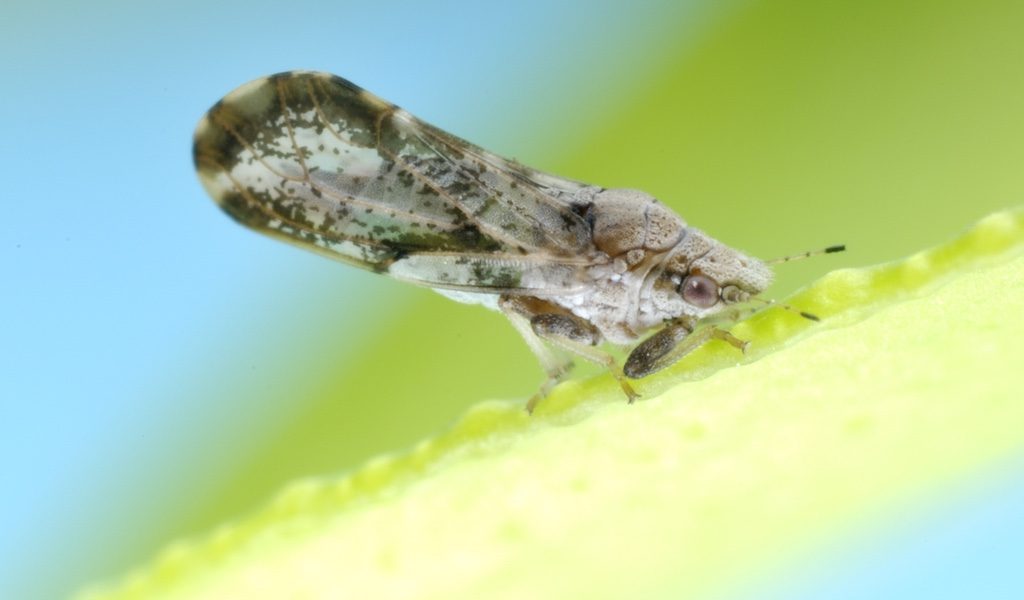
Shielding Citrus Trees from Asian Citrus Psyllids
California wholesale nurseries, which sell to retailers, produce citrus trees inside of insect proof structures in order to shield their trees from Asian citrus psyllids.
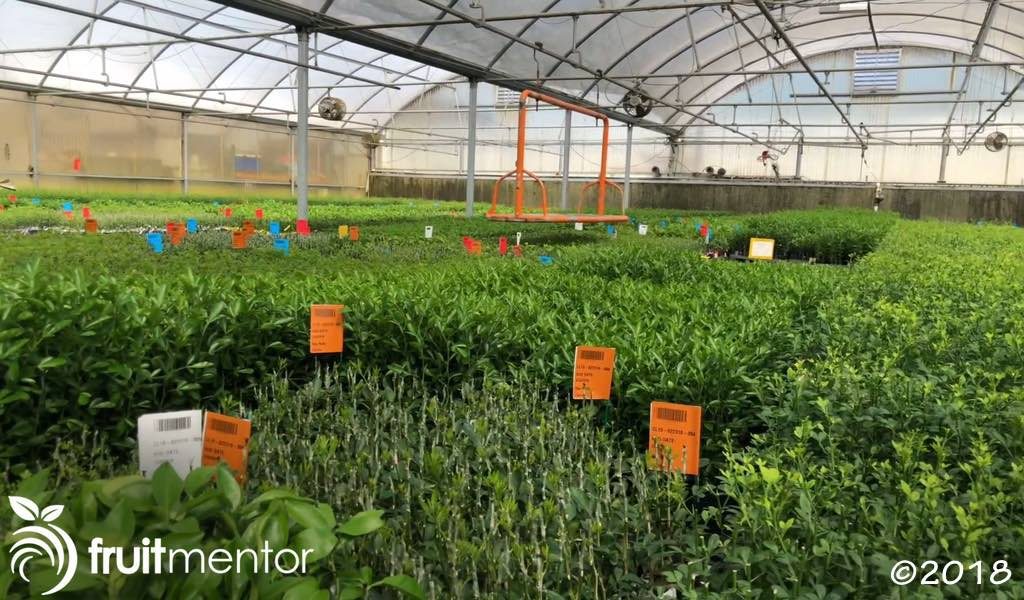
Starting Citrus Trees with Disease-Free Budwood
California wholesale nurseries always bud their trees using certified disease-free budwood. Nurseries start this process by getting disease-free budwood from the Citrus Clonal Protection Program or CCPP.
The CCPP budwood is used to propagate the nursery’s budwood mother trees.
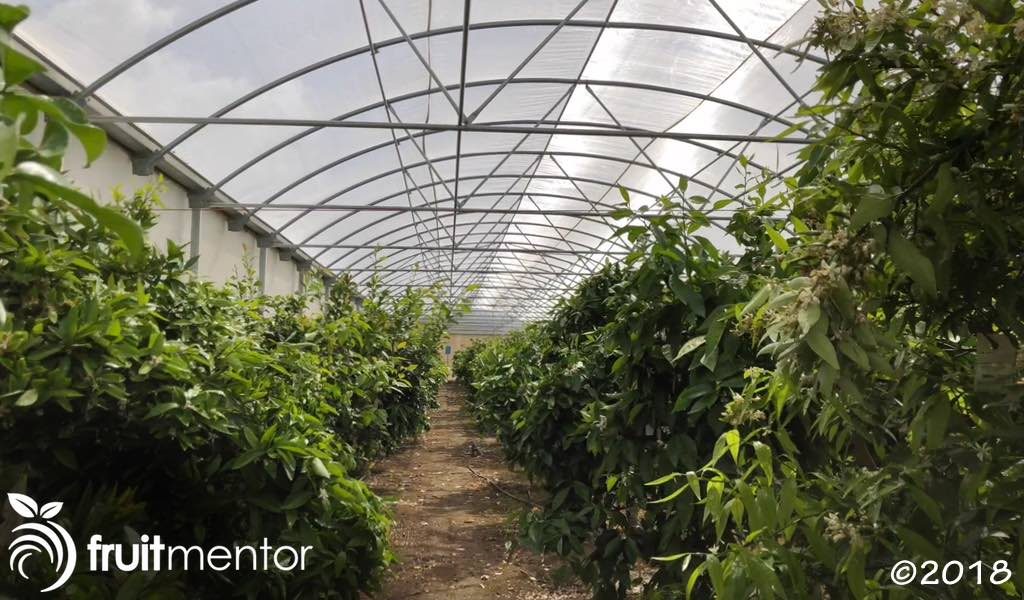
These mother trees are registered with the California Department of Food and Agriculture and are periodically tested to ensure that they are free of disease.
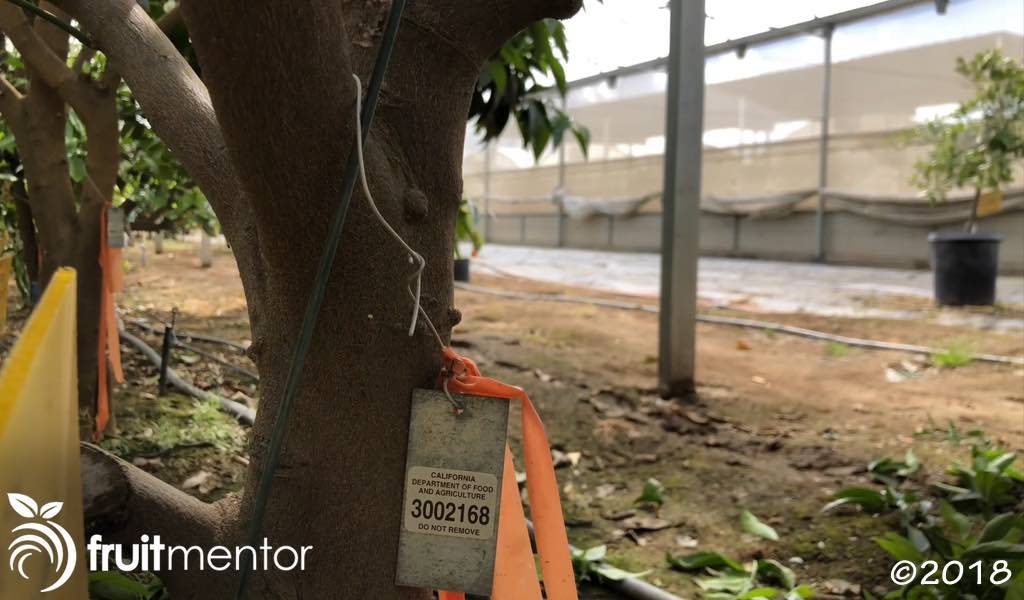
The budwood from the nursery’s mother trees is used to propagate many increase trees.
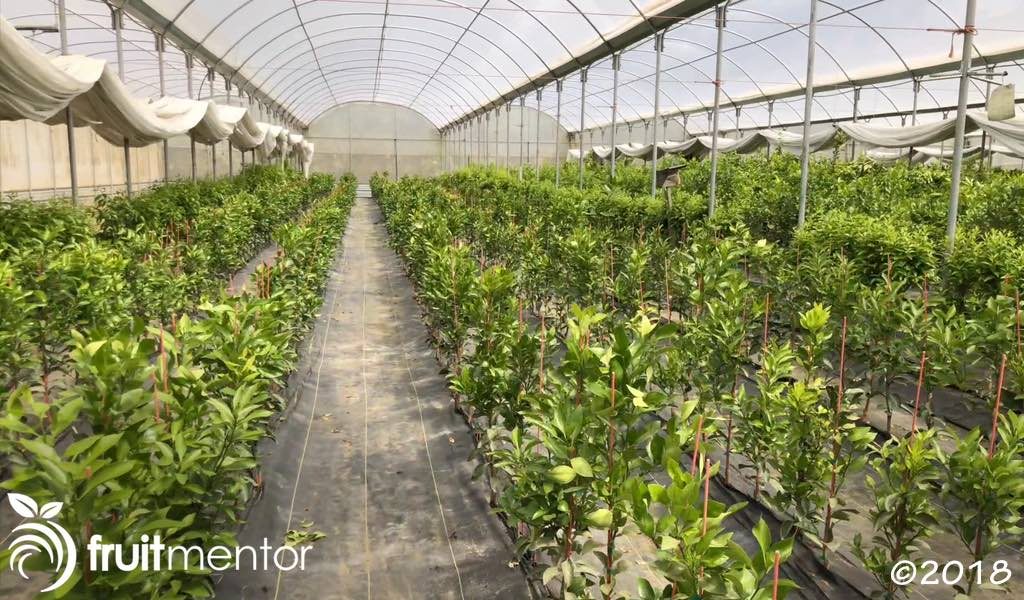
The budwood from increase trees is used to propagate citrus trees for retail sale.
In summary, one citrus bud generates a nursery’s mother tree, which generates hundreds of increase trees, which generate thousands of trees for retail sale. If a nursery were to begin with diseased budwood, it would result in thousands of diseased trees being propagated and sold. For this reason it is critical that citrus propagation start correctly with disease free budwood from the CCPP.
Protecting Citrus Budwood Sources Inside of Insect-Proof Structures
All citrus budwood sources including mother trees and increase trees must be protected from Asian citrus psyllids inside of insect-proof structures.
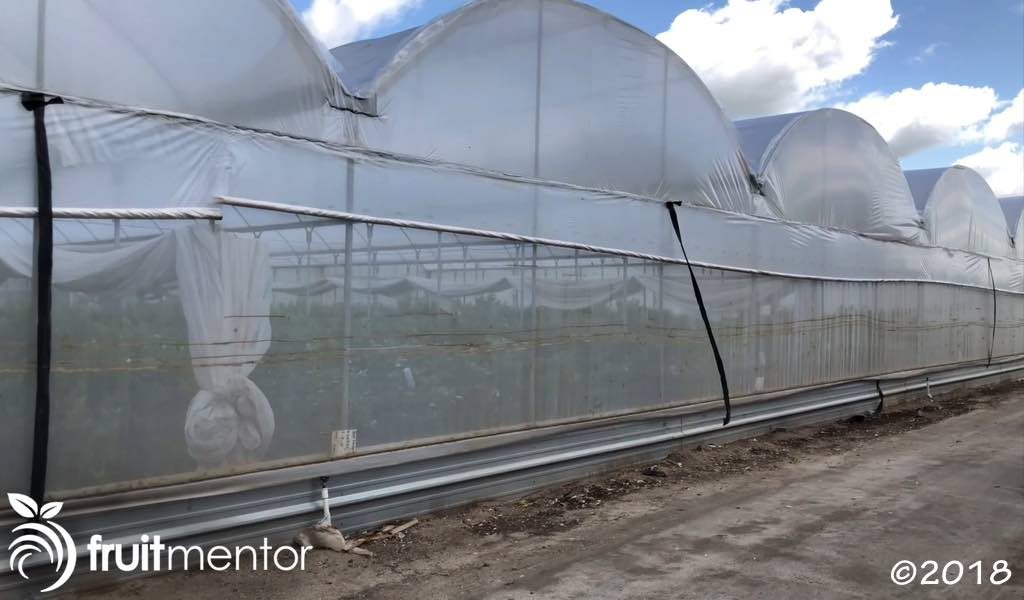
In order to enter or leave an insect-proof structure, employees go through a double-doored vestibule where only one door may be open at the same time.
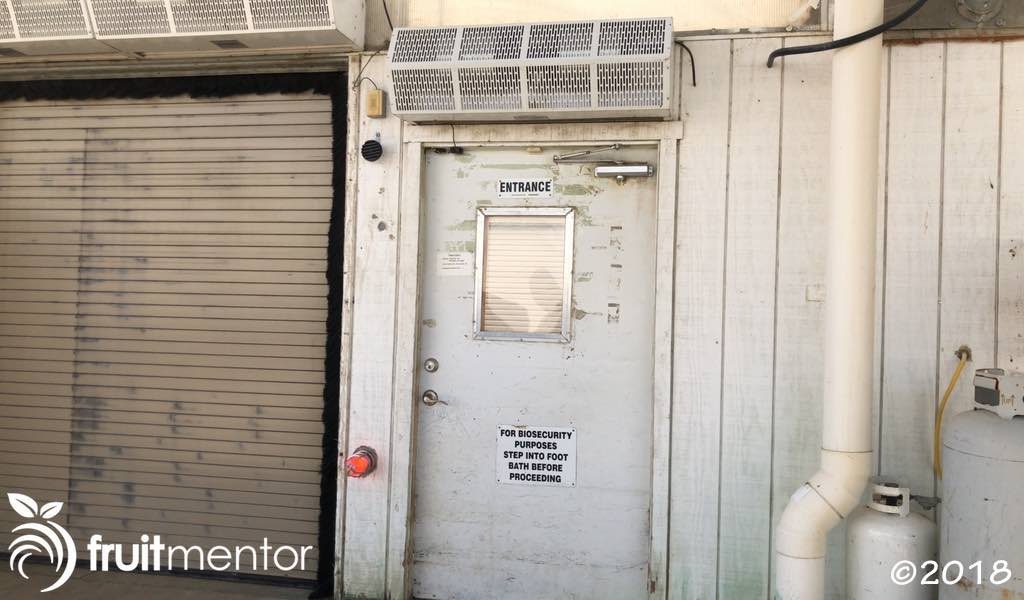
A fan is triggered to blow insects out of the structure whenever the outside door is opened.
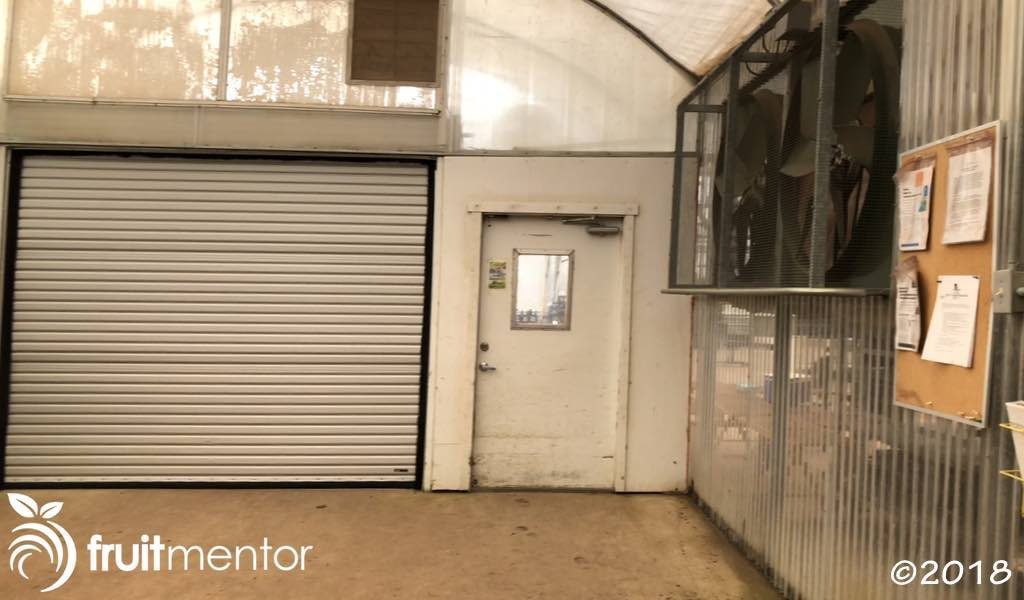
Budding Citrus Trees in the Nursery
Because of the small size of the rootstock, the chip budding technique shown here is more challenging than most other grafting techniques. The advantage of budding on a small sized rootstock is that it allows the propagation of a large number of citrus plants in a limited space, thus improving production efficiency.
The first step in the chip budding procedure is to cut the tops off of the rootstocks that have been grown from seeds.
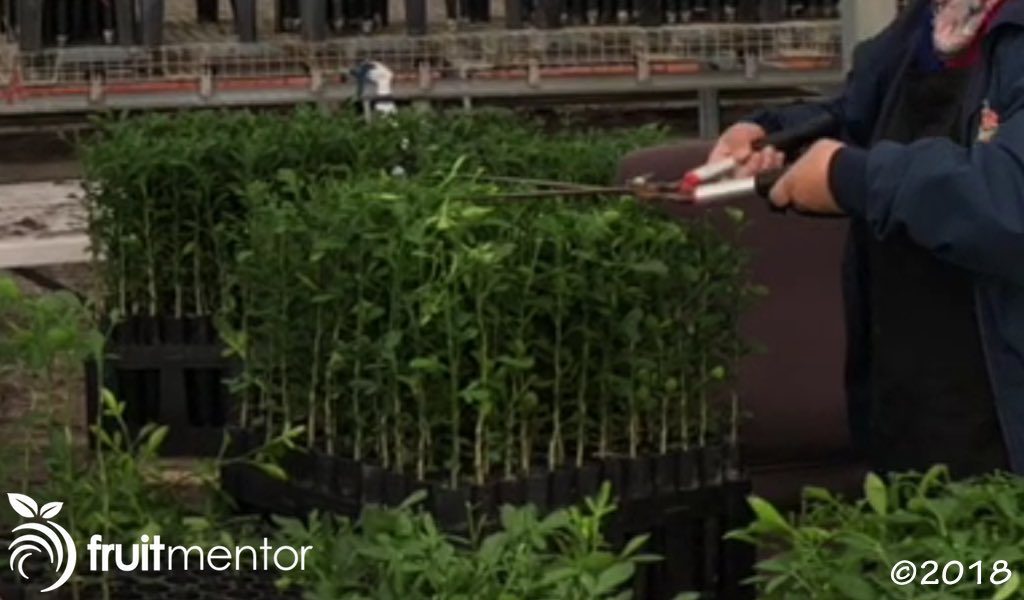
At TreeSource Citrus Nursery, teams of three people perform the chip budding procedure. Two people are budding and a third person wraps the bud grafts from both budders.
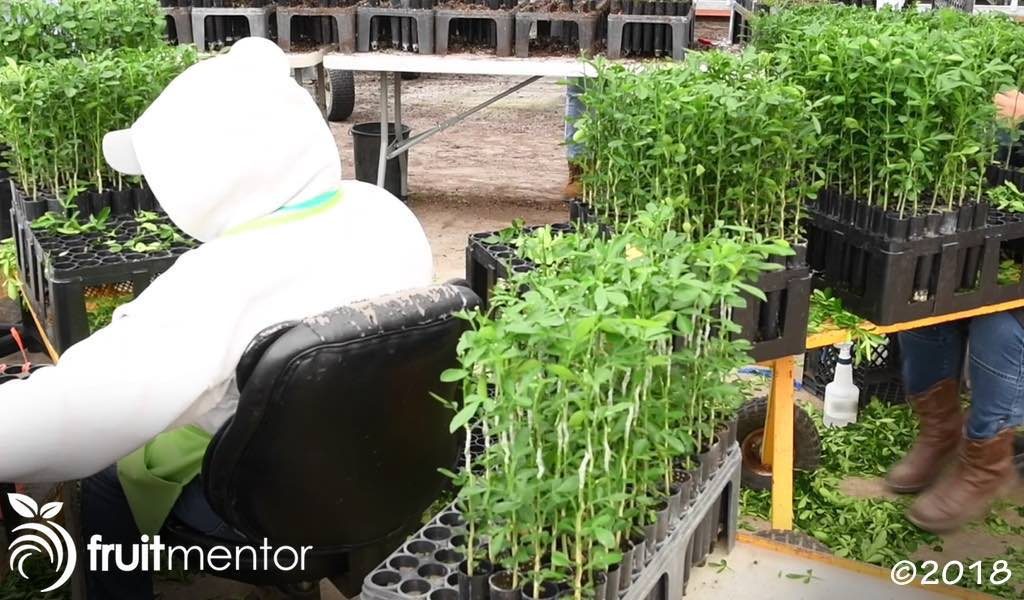
Tools are sterilized whenever the budders switch to a new variety.
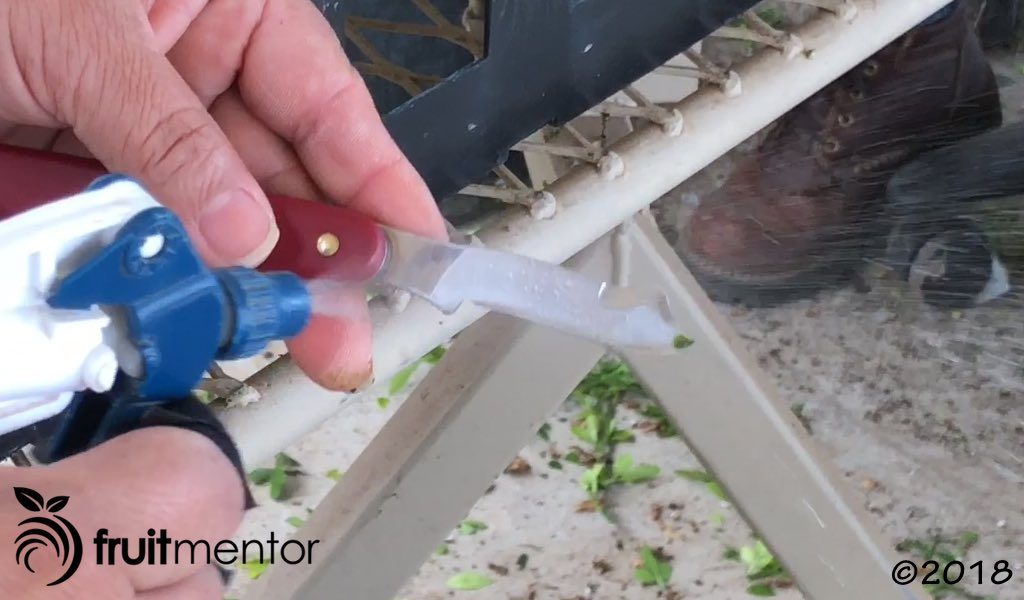
The budder first removes leaves and thorns from a row of rootstocks to make way for buds of the grafted variety.
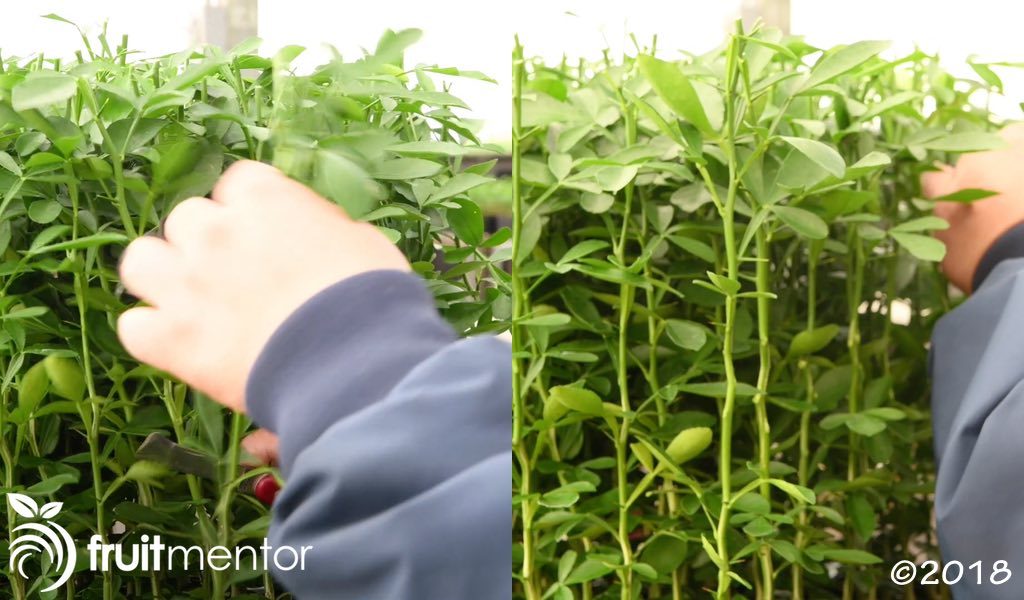
For each tree in the row, the budder then cuts out part of the rootstock to prepare a space for the chip bud to be inserted.
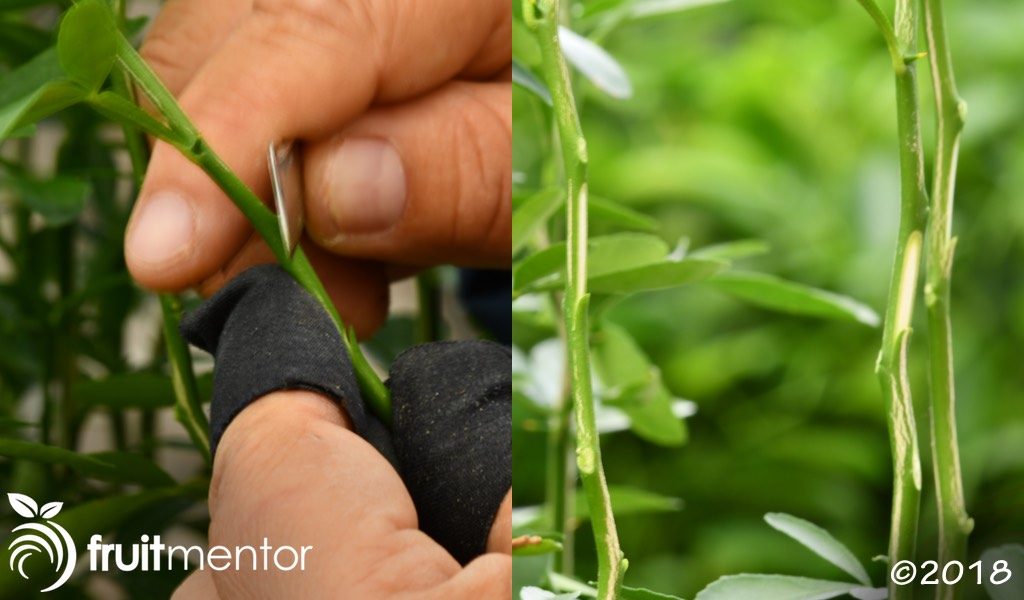
Then for each rootstock, the budder cuts a bud from a budstick of the grafted variety and inserts it into the rootstock.
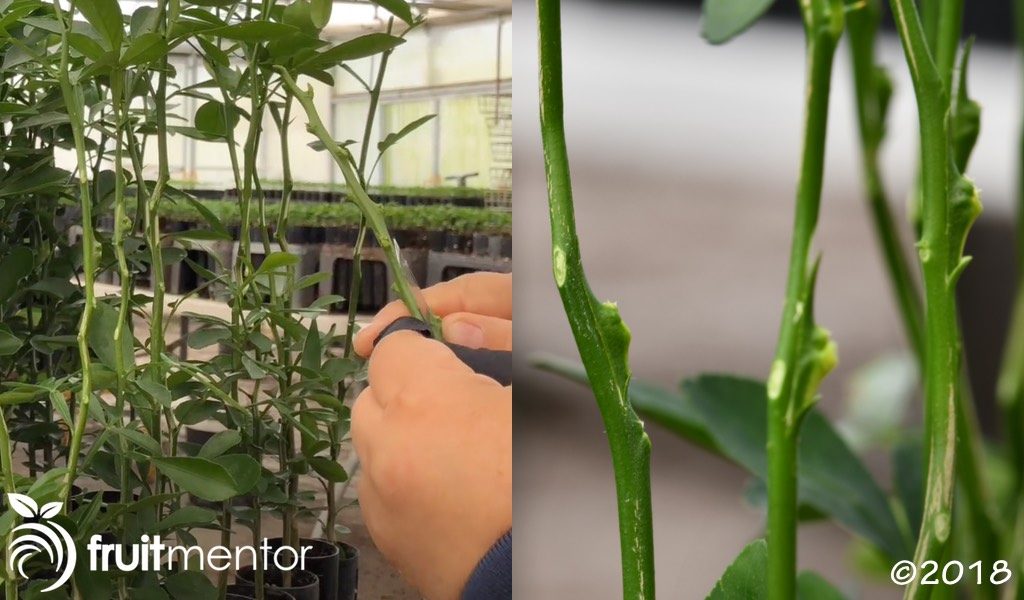
The wrapper carefully wraps each bud graft with a special grafting tape called buddy tape.

The bud will emerge right through the tape, which does not need to be removed.

After the bud is wrapped, the roostocks are cut off above the buds and a tree seal is applied.

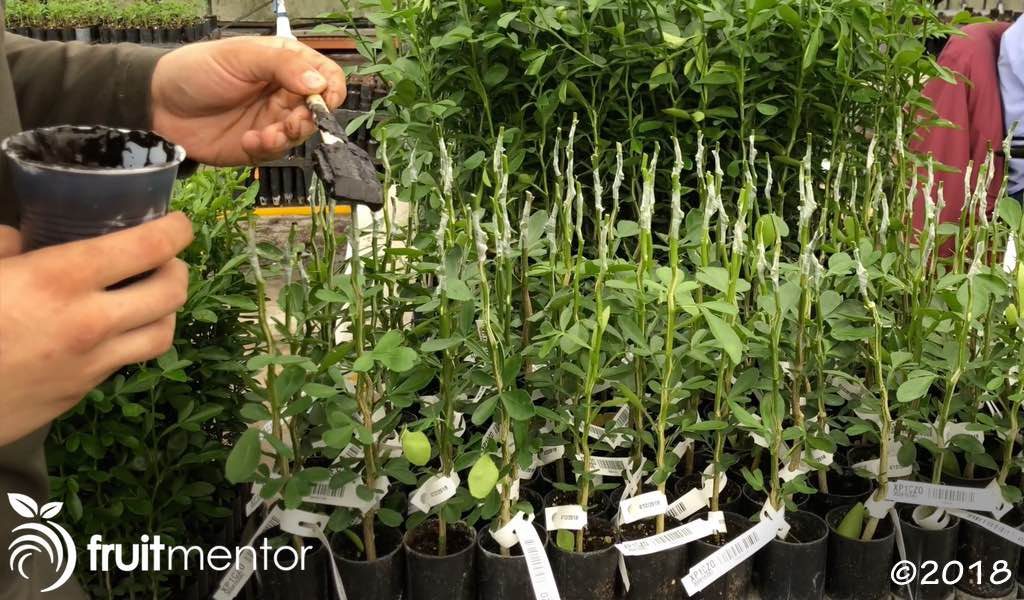
Bud Grafted Citrus Trees Ready for Sale
The finished product is called a citrus liner and is ready eight to twelve weeks after budding depending upon rootstock variety and the time of year.
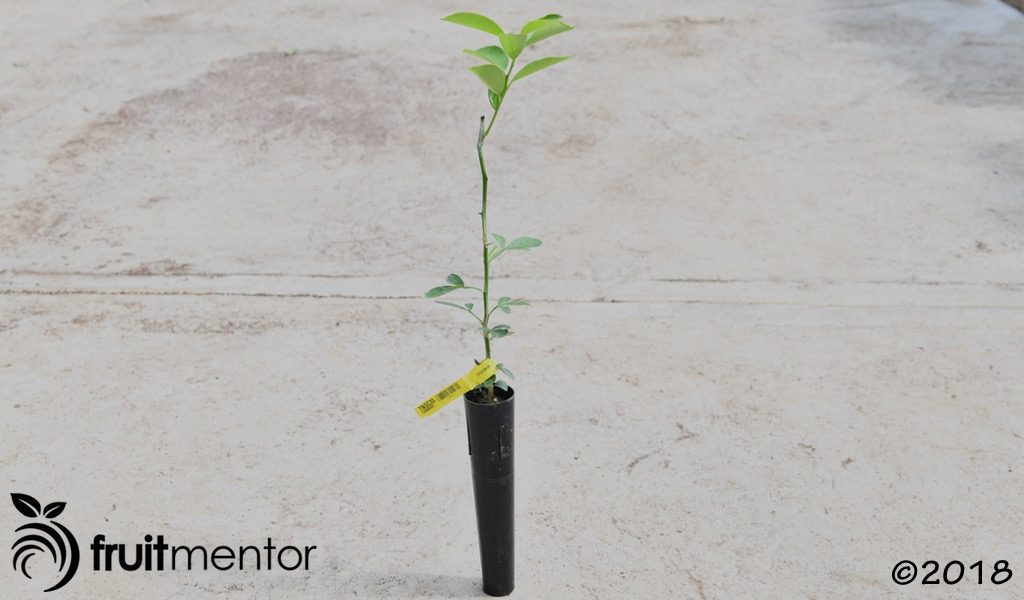
Some citrus liners are shipped to other citrus nurseries that will allow the trees to grow to a larger size before reselling them.
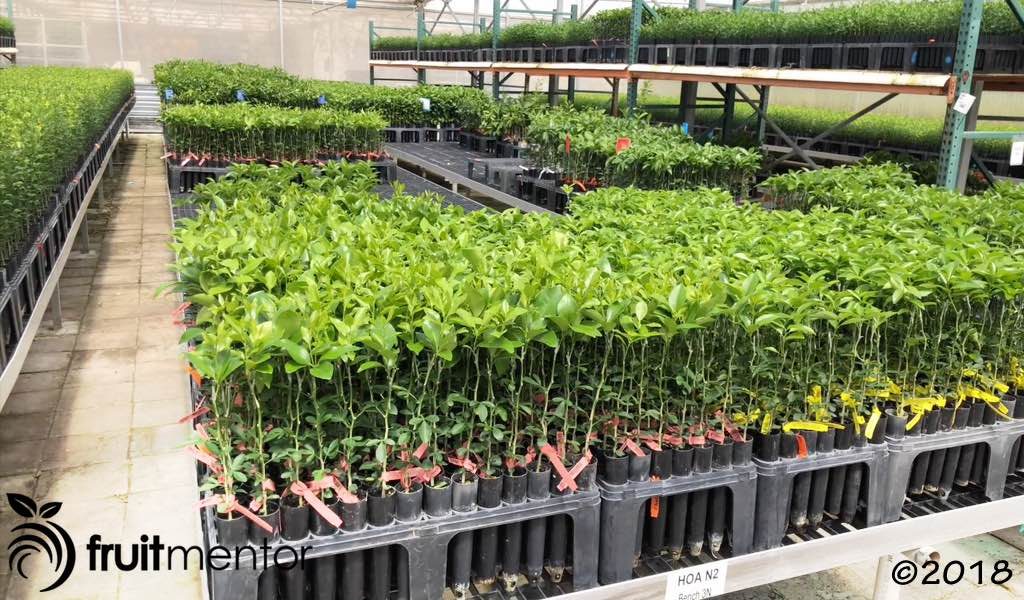
Other citrus liners are planted in larger pots and then sold to citrus farmers after reaching a larger size.
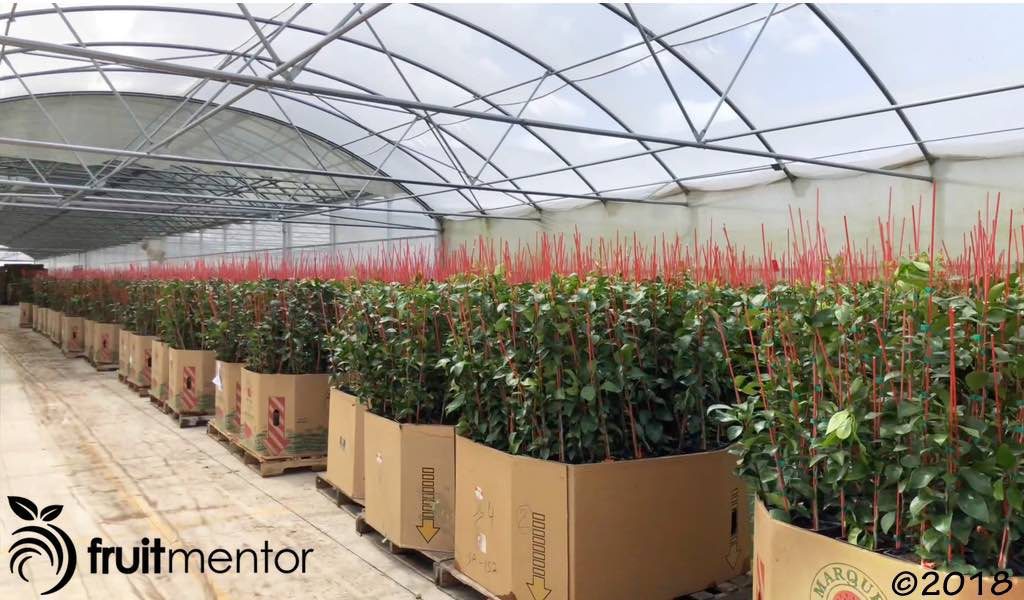
Buying Citrus Trees from Reputable Nurseries is Critical
Huanglongbing is the deadliest known citrus disease. It spreads much more readily than other citrus diseases via Asian citrus psyllids and by movement of citrus budwood and citrus trees. When buying a citrus tree, it is very important to buy from a reputable nursery in order to avoid the inadvertent spread of disease.
Acknowledgement
I thank TreeSource Citrus Nursery for allowing me to view their grafting technique and share it with you.
Resources for Californians
Please visit CaliforniaCitrusThreat.org for more information on how to stop the spread of deadly citrus disease.
California Law Regarding Citrus Propagation
In California, the collection of any citrus propagative materials, including budwood and seeds, from non-registered sources is illegal. Any citrus trees grown or grafted in California must come from source trees registered with either:
- The Citrus Nursery Stock Pest Cleanliness Program, administered by the California Department of Food and Agriculture, or
- The Citrus Clonal Protection Program, located at the University of California at Riverside.
Funding
This article was funded by a grant from California’s Citrus Research Board.

